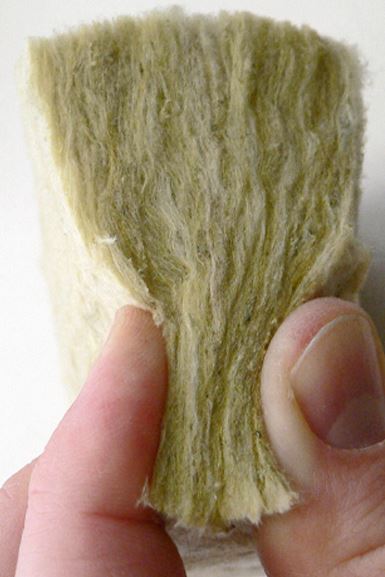Landscape Architecture for Landscape Architects › Forums › TECHNOLOGY › Mineral Wool on Green Roofs – Chance or Challenge?
- This topic has 0 replies, 1 voice, and was last updated 11 years, 2 months ago by
 Jörg Breuning.
Jörg Breuning.
-
AuthorPosts
-
September 21, 2014 at 4:50 pm #152444
 Jörg BreuningParticipant
Jörg BreuningParticipantGreen Roof Innovation?
 Mineral Wool on Green Roofs – Chance or Challenge?
Mineral Wool on Green Roofs – Chance or Challenge?Since its first commercial production in 1871 (Georgmarienhütte, Germany), mineral wool found its way in many applications like thermal insulation and soundproofing. Mineral wool, mineral fibers are typically referred to synthetic materials like fiber glass, ceramic fibers and stone or rock wool. Two main types of mineral wools are on the market – water repellent (Hydrophobic) and water adsorbent (Hydrophilic). For horticultural purposes, only the hydrophilic type is useful. There were patents granted for simple Hydroponic systems or the germination of seeds with mineral wool in the early 80’s.
The first modern green roof systems came on the market around 1985 in Germany where green roof industry gained initial momentum. As a lightweight solution with high water retention, mineral wool seemed an ideal material. The higher costs and the higher carbon footprint – comparing to lightweight aggregates – were offset by lower installation cost and higher water retention.
Extensive research over 5 years at the University of Geisenheim and on numerous buildings confirmed the high water retention properties. However, these tests also revealed that, the performance and the health of the vegetation was far below conventional green roof systems with standardized green roof components. Mineral wool manufacturers and green roof system suppliers stepped away using mineral wool as a growing component for green roofs.
“Today we can see a revival of mineral wools in the green roof industry,” says Jorg Breuning, CEO, Green Roof Service LLC,” in countries with little green roof experience. Mineral wool is getting rather popular again and might have potentially fatal results in the mid and long-run.”
Especially in the United States where the market for mineral wool is growing rapidly, green roof suppliers and installers disregarding existing studies, avoiding extensive long-term testing and only concerned with short-term success so they can be paid quickly. There are even concerns whether certain fibers can cause health problems, about chemicals leaching out or if these components can be recycled when the green roof fails to perform.
In 2012, it was necessary to restore the 90,000 square foof green roof at Amsterdam International Airport because the mineral wool based vegetation carrier ceased to perform. At this point, the Dutch airport has seen the largest green roof restoration in the history of mineral wool on green roofs. The new green roof system did not use any mineral wool components.
More as a PDF from Green Roof Technology or Scribd
Mineral Wool – typical picture
-
AuthorPosts
- You must be logged in to reply to this topic.



